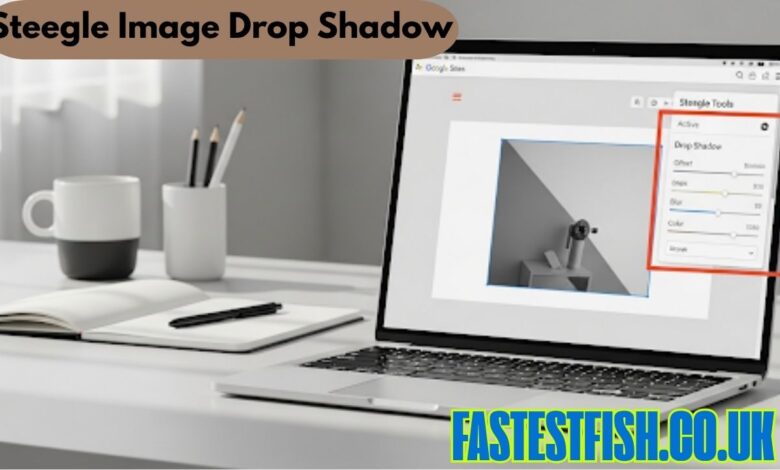How to Add Drop Shadow to Images in Google Sites: Mastering Steegle Image Drop Shadow

Understanding the Power of Visual Design in Google Sites
In today’s digital age, creating a visually appealing website is essential, especially when using user-friendly platforms like Google Sites. With the rise of no-code website builders, Google Sites offers simplicity, ease of use, and integration with Google Workspace. However, some users find its design tools limited compared to more robust website builders. One of the most commonly requested visual enhancements is adding a drop shadow to images—an aesthetic touch that adds depth and professionalism. This is where tools like steegle image drop shadow become extremely valuable.
For those unfamiliar with the concept, a drop shadow is a visual effect that gives the impression that an image is hovering above the page, casting a subtle shadow behind it. This effect is popular in modern web design because it helps separate elements visually, providing a clearer sense of structure and hierarchy on the webpage.
The Limitations of Native Google Sites Image Tools
While Google Sites is an excellent platform for basic websites, it lacks advanced image editing capabilities. By default, there’s no built-in option to apply shadows or filters to images. This has led many users to explore external solutions or workarounds that enable them to enhance their visual design without leaving the Google Sites ecosystem. One such solution is the use of Steegle tools and CSS embedding methods that allow users to customize elements beyond the default scope of Google Sites.
Introducing Steegle: A Trusted Name in Google Sites Customization
Steegle is a recognized brand that provides enhancements, templates, and tools for Google Sites. Their offerings make it possible to achieve design flexibility typically unavailable in the platform. When it comes to steegle image drop shadow, the tool or method provided enables users to add visually appealing drop shadows to images—something previously thought impossible within Google Sites.
Steegle’s techniques often involve using HTML snippets, CSS tricks, or embedded content gadgets to replicate the effect of a drop shadow. These methods don’t just serve cosmetic purposes—they enhance usability and user experience. Visitors are naturally drawn to better-designed elements, and even subtle shadows can significantly improve how users engage with content.
How to Add Drop Shadow to Images in Google Site
The process to add drop shadow to images in Google Site can vary depending on the version of Google Sites you are using. In the classic version, you could manipulate HTML directly. However, in the current (new) Google Sites platform, customization options are limited but not impossible.
One widely accepted method is using the embed function. Users can create a small piece of HTML code with an image tag wrapped in a styled div that includes a shadow class. This HTML can then be embedded on the site using the “Embed” option in Google Sites. Through this method, users can effectively simulate the shadow effect. Alternatively, external tools or image editors can be used to pre-apply a shadow before uploading the image.
In either approach, the concept remains the same: create a drop shadow effect that makes the image stand out, giving it a more polished and intentional look. If you’re using Steegle, they may offer pre-built modules or code snippets that are easy to insert and adapt to your needs.
Why Drop Shadows Matter in Web Design
Drop shadows may seem like a minor addition, but their impact on design cannot be overstated. These effects help define separation between the background and foreground elements. This is particularly useful when placing text near or over images, as the shadow can ensure readability and avoid visual clutter.
Furthermore, design trends in 2025 emphasize depth and realism. Flat designs are evolving into more tactile interfaces where elements seem interactive and layered. This means the ability to add drop shadow to images in Google Site is more than a cosmetic improvement—it’s a step toward staying in line with modern design best practices.
Challenges and Workarounds in Google Sites
The primary challenge in adding drop shadows within Google Sites is the lack of CSS access. Unlike WordPress or custom HTML websites, you can’t freely edit the CSS files to apply styles across the site. This limitation makes tools like steegle image drop shadow more than convenient—they’re necessary.
However, many users have found workarounds. One method is to use external image editors like Canva or Photoshop to add a drop shadow to the image before uploading it to the site. Though effective, this method doesn’t allow dynamic changes once the image is uploaded, and resizing can be tricky.
A better method involves embedding Google Apps Script or using the iframe embed tool with external HTML/CSS. These methods work best for users comfortable with basic coding. Still, for non-coders, Steegle’s pre-configured modules simplify this process significantly.
Steegle’s Approach to Drop Shadow Integration
Steegle provides templates and prebuilt design enhancements that include elements such as drop shadows. These are especially useful for educational institutions, small businesses, and portfolio creators who want to build visually appealing sites without delving deep into code.
The steegle image drop shadow feature often comes packaged as part of a broader design template, or it may be offered through a tutorial with reusable code. Users only need to insert this code via the Google Sites embed tool, upload their image URL, and adjust basic parameters like shadow color, blur, and offset.
Moreover, Steegle provides customer support and documentation, ensuring users can follow along even without prior design experience. This makes it a go-to resource for anyone looking to bring professional polish to a Google Site.
Future of Visual Design on Google Sites
As visual aesthetics become increasingly important in user engagement and retention, even simple enhancements like image shadows are vital. Google has not indicated major updates to its Sites platform’s styling tools, so third-party solutions will likely remain relevant in the foreseeable future.
Tools like Steegle offer more than just shadows—they provide the means to bridge the gap between simplicity and customization. Whether you’re building a school project, a portfolio, or a small business site, the ability to add drop shadow to images in Google Site helps communicate professionalism and intention.
In the evolving landscape of web design, small touches like shadows, spacing, and alignment make a significant difference in the perception of your site. With the help of Steegle and clever workarounds, Google Sites users can unlock new visual possibilities without needing to switch platforms.
Final Thoughts on Adding Drop Shadows in Google Sites
To conclude, the demand for customized image effects in Google Sites, particularly steegle image drop shadow, highlights the importance of visual enhancements in even the simplest website platforms. While Google Sites provides the foundation, tools like Steegle help users transform that foundation into a visually engaging experience.
Even though Google Sites does not support full CSS styling, using embedding strategies, external image editors, or third-party tools like Steegle allows you to create modern, professional-looking websites. Whether you are a student, entrepreneur, teacher, or casual user, understanding how to add drop shadow to images in Google Site will enhance your design capabilities and website aesthetics.
Also Read: The Mystery Behind JM379810: Unraveling the Digital Footprint



